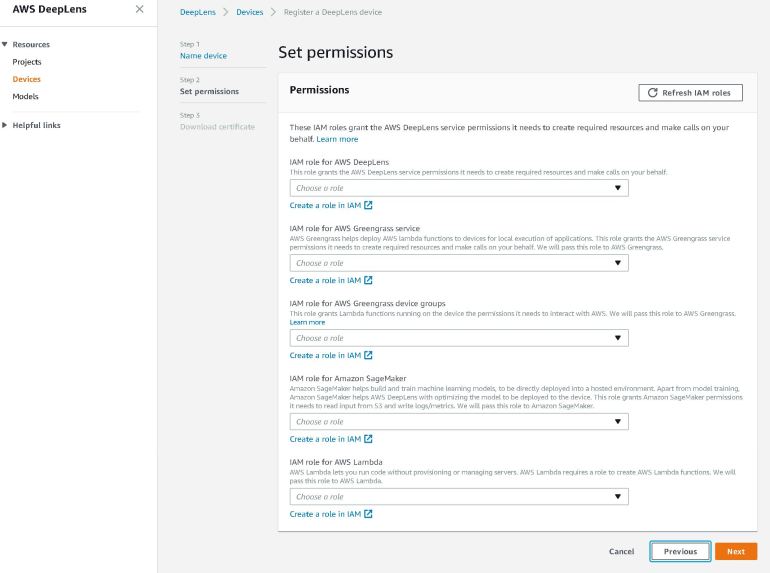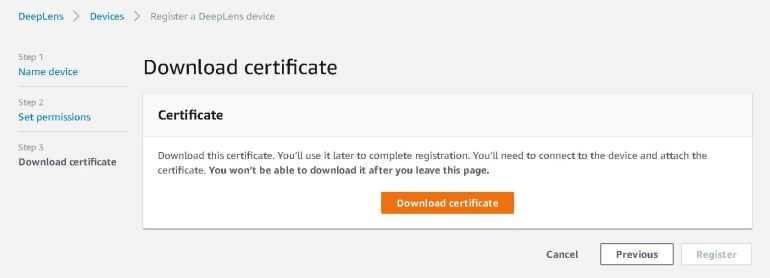Look what I got my hands on!
- 1.Front
- 2.Box
Today I will be taking you through the initial setup of the yet to be released AWS DeepLens. DeepLens is rumoured to be released globally in April 2018.
What is the AWS DeepLens?
Announced at AWS Re-Invent 2017, DeepLens is a marriage of:
- HD Camera
- Intel based computer with an on-board GPU
- Ubuntu OS
- AWS Greengrass
- AWS IOT
- AWS Lambda
- AWS SageMaker
This marriage of technologies is designed to assist developers achieve Deep-Learning inference at the edge device. The edge is typically at the end of the pipeline. What does this all mean?
AWS have made a big play at standardising a data engineer’s pipeline, from writing code in Jupyter notebooks, running training over a cluster, producing a standardised model and finally deploying the model to perform inference at the edge. AWS DeepLens fits in the last step of this pipeline.
Further information can be found here:
https://aws.amazon.com/deeplens/#Tech_Specs
https://aws.amazon.com/deeplens/
With that out of the way, let’s get started.
What’s needed
To get started, the following is required:
- An AWS account
- A WiFi network with internet access
- A computer with a WiFi adaptor and a web browser
- A power adaptor from the US plug type to your own countries power plug type (as of the writing of this post)
For troubleshooting you will need the following:
- Micro-HDMI to HDMI cable
- Monitor with a HDMI port
- USB keyboard and mouse
Gotchas
Before we go any further through the setup process, there are a few gotchas I encountered while getting the device online that are worth highlighting sooner rather than later:
- Ensure the wireless network your connecting to is not on a 192.168.0.0/24 network
- Turn off any JavaScript blocking plugins in your web browser
- The password for the DeepLens WiFi may have confusing letters in the them like a capital i that looks like a L
A recent update confirmed there were Wi-Fi issues seen here on the AWS DeepLens Developer Forum
Setting up the DeepLens in the AWS console
- Login into your AWS Management console
- Switch to the US-East region (the only available region for the DeepLens at the time of writing)
- Click on the DeepLens Service under Machine Learning
- Select Devices from the top navigation bar to navigate to the projects page

- Click the Register Device button on the right side of the screen

- Give your DeepLens a descriptive name, then select Next

- On the Set permissions page, select the Create a role in IAM for all fields, then select Next

- You’re now provided with an AWS generated certificate that authenticates AWS DeepLens with the IOT Greengrass service. Click Download certificate and store the zip file in a safe place

- Click Register . You’re now ready to plug in you DeepLens
Unpacking and plugging in
- 4.In Box
- 3.Back
The DeepLens comes with:
- A power pack with a US style power plug
- A micro SD card
- The DeepLens itself
To connect the DeepLens, perform the following:
- Insert the micro SD card into the back of the DeepLens
- Attach the power adaptor from the DeepLens to the wall socket
- Press the power button
Connecting to the DeepLens WiFi access point from a PC
This is well documented by the AWS Management console, as displayed in the screenshot below.

The only thing to add here, is to watch out for confusing characters in the password on the device.
Once you have navigated to http://192.168.0.1/ in your web browser, you will get to a web-based-wizard that steps through the setup process beginning with connecting to your WiFi network.
Connecting the DeepLens to your network
Select your SSID from the list and provide your network password. Once connected you will most likely see a screen that mentions the device is updating. Ensure you wait the dictated length of time before clicking on the Reboot button. If nothing happens wait longer and try again.

Uploading the certificate
Once the device reboots the screen will allow you to upload the certificate downloaded in the previous step, then click Next.

Setting up ssh and other settings
On the final page, specify a device password and enable ssh access to the device. There’s also an additional option to enable automatic device updates. Automatic updates are on by default and I recommend leaving it that way. Once you’re ready, click Review.

Validating your DeepLens connectivity
Ensure you finalise the configuration by clicking Finish.

You should now see the following screen which indicates you have completed the wizard:

At this point you should see the DeepLens Registration status in the AWS Management console move from In Progress to Completed. This may take a up to 5 minutes.
You are now ready to deploy machine learning projects to the device.
Next time
In the next blog post, we’ll deploy some of the sample projects and learn how they work. We’ll also explore how this integrates with AWS SageMaker.




thanks for sharing